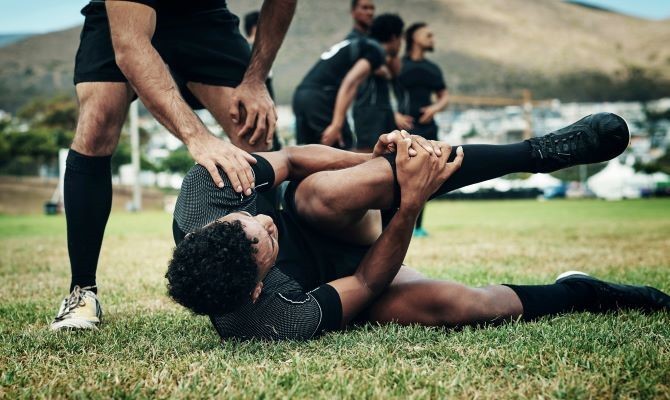Why do sports injuries keep coming back? Here's how physio can help
11 Aug 2025
28 Nov 2025

Pain is the body’s way of protecting itself. It tells you that something needs care or rest. It does not always mean serious damage, but it is an important signal to pay attention to.
The amount of pain you feel can depend on more than just the injury itself. Sleep, stress, and hydration can all influence how your body responds. A little bit of pain is normal as you recover, but if it feels sharp, gets worse, or stops you from moving comfortably, it is best to get checked by a physiotherapist.
It can be tempting to push through pain, especially if you are training for something important or do not want to miss a game. But ignoring pain often leads to bigger problems later.
Think of it like a warning light on your car dashboard. You can keep driving for a while, but eventually something will break down. The same goes for your body. A small issue left untreated can turn into a bigger injury.
If you are unsure, get your injury assessed early. Physiotherapists can tell you what is going on, treat it properly, and help you recover faster.
Every injury is different, but there are a few key treatments that work well for most types of sports pain.
1. Rest and Protection
Give the injured area time to heal by avoiding movements that cause pain. That does not mean staying completely still. Gentle movement can help prevent stiffness and maintain circulation.
2. Ice and Heat Therapy
Cold therapy can reduce swelling and pain in the first couple of days. Wrap ice in a towel and apply it for five to ten minutes. After a few days, switching to heat can help relax tight muscles and improve blood flow.
3. Compression and Elevation
If there is swelling, use light compression and elevate the area above heart level to reduce fluid build-up.
4. Physiotherapy for Sports Injuries
Physiotherapy is one of the most effective pain relief treatments for sports injuries. A physiotherapist will assess your injury and use hands-on treatment, exercise, and movement strategies to promote healing.
Treatments like massage, joint mobilisation, dry needling, and stretching can all help reduce pain and restore mobility. Your physio will also give you specific exercises to build strength and prevent re-injury.
5. Exercise and Gradual Loading Movement is medicine. Once the pain begins to settle, guided exercises help strengthen muscles and support the healing process. Gradual loading trains the injured area to handle activity again, which prevents further pain.
6. Medication and Pain Relief Pain relief medication can be useful in the short term to help you stay comfortable and mobile. Always use medication under medical guidance, and focus on long-term recovery through movement and physiotherapy.
One of the biggest mistakes people make is waiting too long to seek treatment. With so much information online, it is easy to self-diagnose or try home remedies that do not actually help.
Another common mistake is resting too much. Complete rest might seem like the safest option, but too little movement can slow down recovery. On the other hand, doing too much too soon can also make the injury worse. Physiotherapists help you find the right balance between rest and activity.
Physiotherapy plays a key role in both pain relief and long-term recovery. A sports physio can pinpoint what caused the injury, treat the pain directly, and create a personalised plan to strengthen and restore the affected area.
Beyond the physical benefits, physio also supports the mental side of recovery. Injuries can be frustrating and impact motivation or confidence. Setting small, realistic goals helps people stay positive and see their progress along the way.
If your pain lasts more than a few days, gets worse, or stops you from training normally, it is time to see a physiotherapist. The earlier you start treatment, the faster and safer your recovery will be.
Even minor injuries can benefit from a quick assessment. Early treatment not only helps reduce pain but also prevents the injury from turning into a chronic issue.
Once your pain has settled, focus on prevention. Building strength, improving flexibility, and maintaining good technique are key to staying injury-free. Regular warm-ups, cool-downs, and recovery days are just as important as the training itself.
Physiotherapists can also help you spot movement patterns or weaknesses that increase your risk of injury, so you can correct them before they cause problems.
Recovering from a sports injury takes patience and the right approach. The best pain relief treatments combine hands-on care, exercise, and guidance from a physiotherapist.
The goal is not only to relieve pain but to help you move confidently, return stronger, and reduce your risk of getting hurt again.
Need help recovering from a sports injury?
Our physiotherapists can help you reduce pain, rebuild strength, and safely return to your sport.
Book an appointment online or visit your nearest Habit Health clinic.